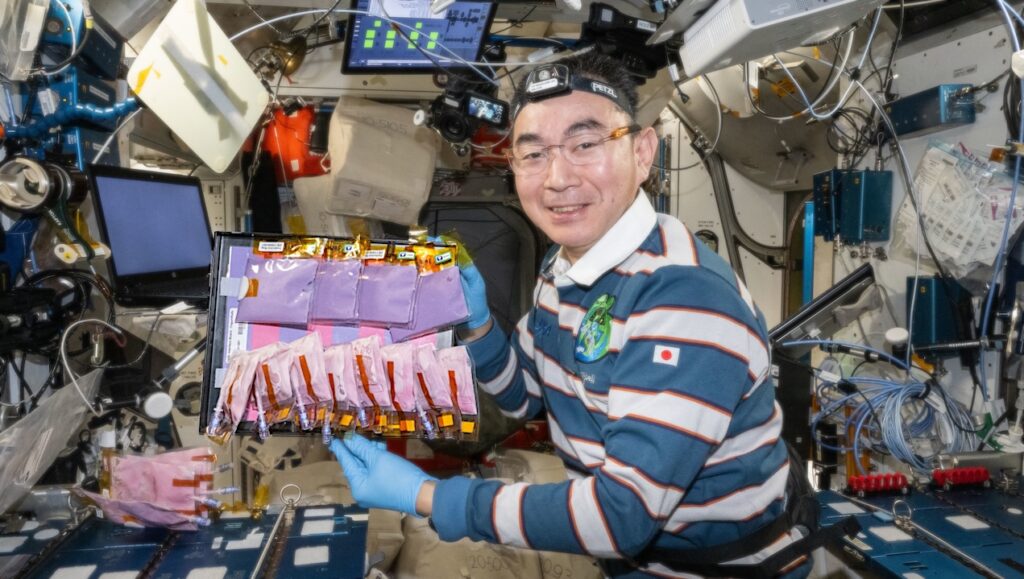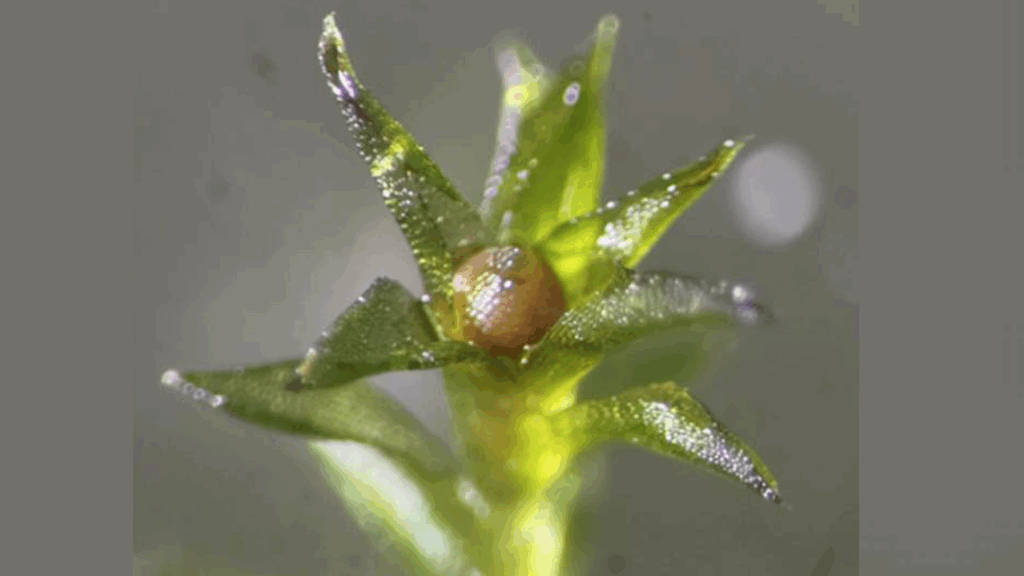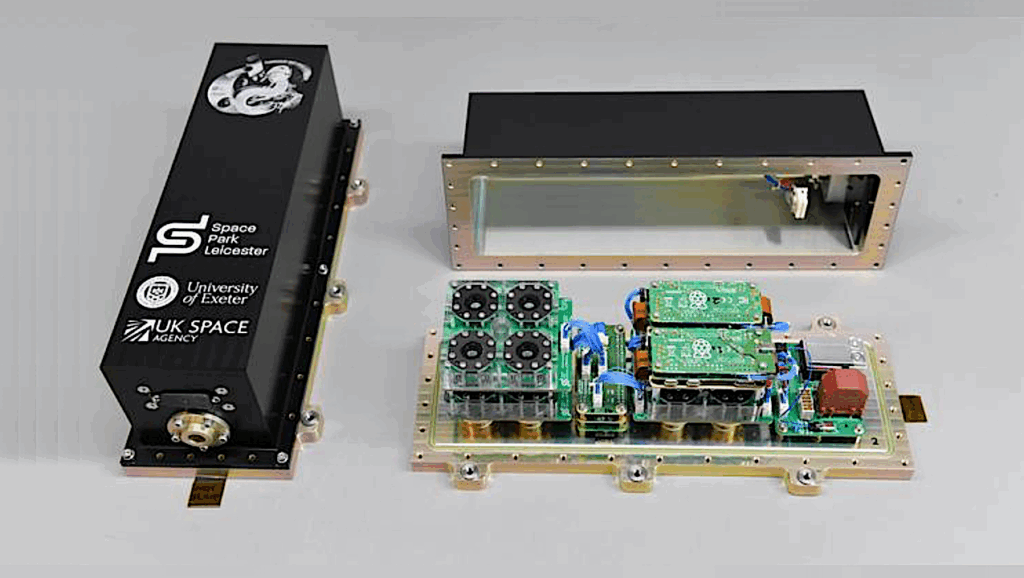NASA Spaceline Current Awareness List #1,108 12 July 2024 (Space Life Science Research Results)

Space Biology research on ISS – – NASA
The abstract in PubMed or at the publisher’s site is linked when available and will open in a new window.
Papers deriving from NASA support:
Papers deriving from NASA support:
- Iwakoshi N, Kelley T, Hopkins S, Thompson R, Tan J, Pecaut M, Fleshner M, Wilson C.A prebiotic diet increases cardiovascular adaptability under hypergravity-induced stress.Physiology. 2024 May 21;39(S1):1751.PI: M. PecautNote: The NASA Ames 1.22-meter radius centrifuge was used in this study.
Journal Impact Factor: 5.3
Funding: “NASA grant 80NSSC19K1038 funded this project.” - Lidberg KA, Jones-Isaac K, Yang J, Bain J, Wang L, MacDonald JW, Bammler TK, Calamia J, Thummel KE, Yeung CK, Countryman S, Koenig P, Himmelfarb J, Kelly EJ.Modeling cellular responses to serum and vitamin D in microgravity using a human kidney microphysiological system.npj Microgravity. 2024 Jul 9;10:75.Journal Impact Factor: 5.1
Funding: “This work was supported by the National Center for Advancing Translational Sciences (UH3TR000504, UG3TR002158 and UH3TR002178), jointly by the National Center for Advancing Translational Sciences and the Center for the Advancement of Science in Space (UG3TR002178), the National Institute of Environmental Health Sciences (P30ES00703 & T32 ES007032) and an unrestricted gift from Northwest Kidney Centers to the Kidney Research Institute. BioServe’s work was supported in part by NASA contracts 80JSC020F0019 and 80JSC017F0129.” - Rosa-Caldwell ME, Pandeya S, Mortreux M, Rutkove SB.Predicting muscle function and mass with electrical impedance myography: A study in rat analogs of micro- and partial gravity.Acta Astronaut. 2024 Jul 10. Online ahead of print.PI: M.E. Rosa-CaldwellJournal Impact Factor: 3.1
Funding: “This study was supported by NASA Award 80NSSC21K0311 (M.E.R/S.B.R).” - Impey S, Raber J.Irradiation and alterations in hippocampal DNA methylation.Epigenomes. 2024 Jul 5;8(3):27.PI: J. RaberNote: This article is part of Collection “Feature Papers in Epigenomes” (https://www.mdpi.com/journal/epigenomes/topical_collections/U4UGPU484I) and may be obtained online without charge.
Journal Impact Factor: 2.8
Funding: “The research described in this review was funded by NASA grants NNJ12ZSA001N, 80NSSC19K0498–P00001, the Legacy Good Samaritan Foundation (S.I.), and the development accounts of J.R. and S.I.” - Jimenez M, L’Heureux J, Kolaya E, Liu GW, Martin KB, Ellis H, Dao A, Yang M, Villaverde Z, Khazi-Syed A, Cao Q, Fabian N, Jenkins J, Fitzgerald N, Karavasili C, Muller B, Byrne JD, Traverso G.Synthetic extremophiles via species-specific formulations improve microbial therapeutics.Nat Mater. 2024 Jul 5.PI: M. JimenezNote: From the abstract: “Microorganisms typically used to produce food and pharmaceuticals are now being explored as medicines and agricultural supplements. However, maintaining high viability from manufacturing until use remains an important challenge, requiring sophisticated cold chains and packaging. Here we report synthetic extremophiles of industrially relevant gram-negative bacteria (Escherichia coli Nissle 1917, Ensifer meliloti), gram-positive bacteria (Lactobacillus plantarum) and yeast (Saccharomyces boulardii).”
Journal Impact Factor: 37.2
Funding: “This work was supported in part by the Translational Research Institute for Space Health through Cooperative Agreement NNX16AO69A through grants awarded to G.T. and M.J.; G.T. was supported in part by the Department of Mechanical Engineering, Massachusetts Institute of Technology (MIT) and the Karl van Tassel (1925) Career Development Professorship, MIT.” - Hendrix DA, Catalano T, Nekvasil H, Glotch TD, Legett IV C, Hurowitz JA.The reactivity of experimentally reduced lunar regolith simulants: Health implications for future crewed missions to the lunar surface.Meteoritics & Planetary Science. 2024 Jun 27. Online ahead of print.Note: From the abstract: “Crewed missions to the Moon may resume as early as 2026 with NASA’s Artemis III mission, and lunar dust exposure/inhalation is a potentially serious health hazard that requires detailed study. Current dust exposure limits are based on Apollo-era samples that spent decades in long-term storage on Earth; their diminished reactivity may lead to underestimation of potential harm that could be caused by lunar dust exposure. In particular, lunar dust contains nanophase metallic iron grains, produced by ‘space weathering’; the reactivity of this unique component of lunar dust is not well understood. Herein, we employ a chemical reduction technique that exposes lunar simulants to heat and hydrogen gas to produce metallic iron particles on grain surfaces.”
Journal Impact Factor: 2.2
Funding: “This work was supported by the RISE2 node of the NASA Solar System Exploration Research Virtual Institute (SSERVI) under agreement NNA114AB04A.”
Other papers of interest:
- Bakr MM, Caswell GM, Hussein H, Shamel M, Al-Ankily MM.Considerations for oral and dental tissues in holistic care during long-haul spaceflights.Front Physiol. 2024 Jul 11;15:1406631. Review.Note: This article may be obtained online without charge.
- Etlin S, Bielski L, Rose J, Morales K, Belman A, Alexander E, Li E, Lin R, Patel K, Rakhmonova S, Walter C, Mason CE.Enhanced astronaut hygiene and mission efficiency: A novel approach to in-suit waste management and water recovery in spacewalks.Front Space Technol. 2024 Jul 11;5:1391200.Note: This article is part of Research Topic “Innovation in Medical Space Technology” (https://www.frontiersin.org/research-topics/57838/innovation-in-medical-space-technology/overview). Additional articles will be forthcoming and may be found in the link to the Special Issue. This article may be obtained online without charge.
- Godard B.Allergy and hypersensitivity diseases in space: Physiological changes, clinical aspects, and mechanisms with countermeasures.Journal of Allergy and Hypersensitivity Diseases. Review. 2024 May 29;100007.
- Żyłka M, Górski G, Żyłka W, Gala-Błądzińska A.Numerical analysis of blood flow in the abdominal aorta under simulated weightlessness and Earth conditions.Sci Rep. 2024 Jul 10;14:15978.Note: From the abstract: “Blood flow through the abdominal aorta and iliac arteries is a crucial area of research in hemodynamics and cardiovascular diseases. To get in to the problem, this study presents detailed analyses of blood flow through the abdominal aorta, together with left and right iliac arteries, under Earth gravity and weightless conditions, both at the rest stage, and during physical activity. The analysis were conducted using ANSYS Fluent software. The results indicate, that there is significantly less variation in blood flow velocity under weightless conditions, compared to measurement taken under Earth Gravity conditions. Study presents, that the maximum and minimum blood flow velocities decrease and increase, respectively, under weightless conditions.” This article may be obtained online without charge.
- Pagnini F, Thoolen S, Smith N, Van Ombergen A, Grosso F, Langer E, Phillips D.Mindfulness disposition as a protective factor against stress in Antarctica: A potential countermeasure for long-duration spaceflight?J Environ Psychol. 2024 Mar;94:102254.Note: From the abstract: “Long-duration missions in isolated, confined, and extreme environments, including Antarctica and upcoming deep-space operations, can be a source of increased stress. The identification of countermeasures and protective factors is required to support health and performance in similar contexts. Mindfulness disposition is an optimal candidate, but no research has ever explored this potential association.”
- Pak S, Cucinotta FA.Organ dose equivalents of albedo protons and neutrons under exposure to large solar particle events during lunar human landing missions.Life Sci Space Res. 2024 Jul 10. Online ahead of print.Note: From the abstract: “This work assesses the organ dose equivalents of albedo neutrons and albedo protons during historically large SPEs in August 1972 and September 1989 utilizing realistic computational anthropomorphic human phantom for the first time.”
- Zhao M, Aintablian H, Satcher RL, Daneshjou R, Rosenbach M.Dermatologic considerations for spaceflight and space exploration.JID Innovations. 2024 May 31. Online ahead of print.Note: This article is a commentary and may be obtained online without charge.
- Burgess AJ, Pranggono R, Escribà-Gelonch M, Hessel V.Biofortification for space farming: Maximizing nutrients using lettuce as a model plant.Future Foods. 2024 Jun;9:100317.
- Ho CNQ, Hoang SN, Nguyen HH, Nguyen HTM, Truong HT, Nguyen QTT, Ly CN, Le LT.The adaptation of 3T3 cells to simulated microgravity by retrieving the major cell cycle-related protein expression during long-term in vitro proliferation.Tissue and Cell. 2024 Aug;89:102460.
- Rouillard A, Escot Bocanegra P, Stancampiano A, Dozias S, Lemaire J, Pouvesle JM, Robert E, Brulé-Morabito F, Demasure M, Rouquette S.Demonstration for cold atmospheric pressure plasma jet operation and antibacterial action in microgravity.npj Microgravity. 2024 Jul 6;10:74.Note: From the abstract: “The experiments in microgravity take place in an Airbus A310 airplane. The microgravity conditions are achieved during a parabolic flight operation.” This article may be obtained online without charge.
- Shinohara H, Muramoto M, Tamaoki D, Kamachi H, Inoue H, Kume A, Karahara I.Prolonged exposure to hypergravity increases number and size of cells and enhances lignin deposition in the stem of Arabidopsis thaliana.J Plant Res. 2024 Jul 2.Note: From the abstract: “We have performed a lab-based hypergravity cultivation experiment using a centrifuge equipped with a lighting system and examined long-term effects of hypergravity on the development of the main axis of the Arabidopsis (Arabidopsis thaliana (L.) Heynh.) primary inflorescence, which comprises the rachis and peduncle, collectively referred to as the main stem for simplicity.”
- Hayashi T, Sadaki S, Tsuji R, Okada R, Fuseya S, Kanai M, Nakamura A, Okamura Y, Muratani M, Wenchao G, Sugasawa T, Mizuno S, Warabi E, Kudo T, Takahashi S, Fujita R.Dual-specificity phosphatases 13 and 27 as key switches in muscle stem cell transition from proliferation to differentiation.Stem Cells. 2024 Jul 8. Online ahead of print.Note: This article may be obtained online without charge.
- Lim CH, Cha MC, Lee SC.Physical loads on upper extremity muscles while interacting with virtual objects in an augmented reality context.Appl Ergon. 2024 Oct;120:104340.Note: From the abstract: “Augmented reality (AR) environments are emerging as prominent user interfaces and gathering significant attention. However, the associated physical strain on the users presents a considerable challenge. Within this background, this study explores the impact of movement distance (MD) and target-to-user distance (TTU) on the physical load during drag-and-drop (DND) tasks in an AR environment.”
- Sands I, Demarco R, Thurber L, Esteban-Linares A, Song D, Meng E, Chen Y.Interface-mediated neurogenic signaling: The impact of surface geometry and chemistry on neural cell behavior for regenerative and brain-machine interfacing applications.Adv Mater. 2024 Jun 21:e2401750. Review. Online ahead of print.Note: From the abstract: “Nanomaterial advancements have driven progress in central and peripheral nervous system applications such as tissue regeneration and brain-machine interfacing. Ideally, neural interfaces with native tissue shall seamlessly integrate a process that is often mediated by the interfacial material properties. Surface topography and material chemistry are significant extracellular stimuli that can influence neural cell behavior to facilitate tissue integration and augment therapeutic outcomes. This review characterizes topographical modifications, including micropillars, microchannels, surface roughness, and porosity, implemented on regenerative scaffolding and brain-machine interfaces.” This article may be obtained online without charge.
- Mündermann A, Liphardt A-M, Herger S.In vivo models of human articular cartilage mechanosensitivity.In: Nochehdehi AR, Nemavhola F, Thomas S, Maria HJ, eds. Cartilage Tissue and Knee Joint Biomechanics. Academic Pres, 2024. p. 335-65.
Astrobiology, microgravity, space life science,








